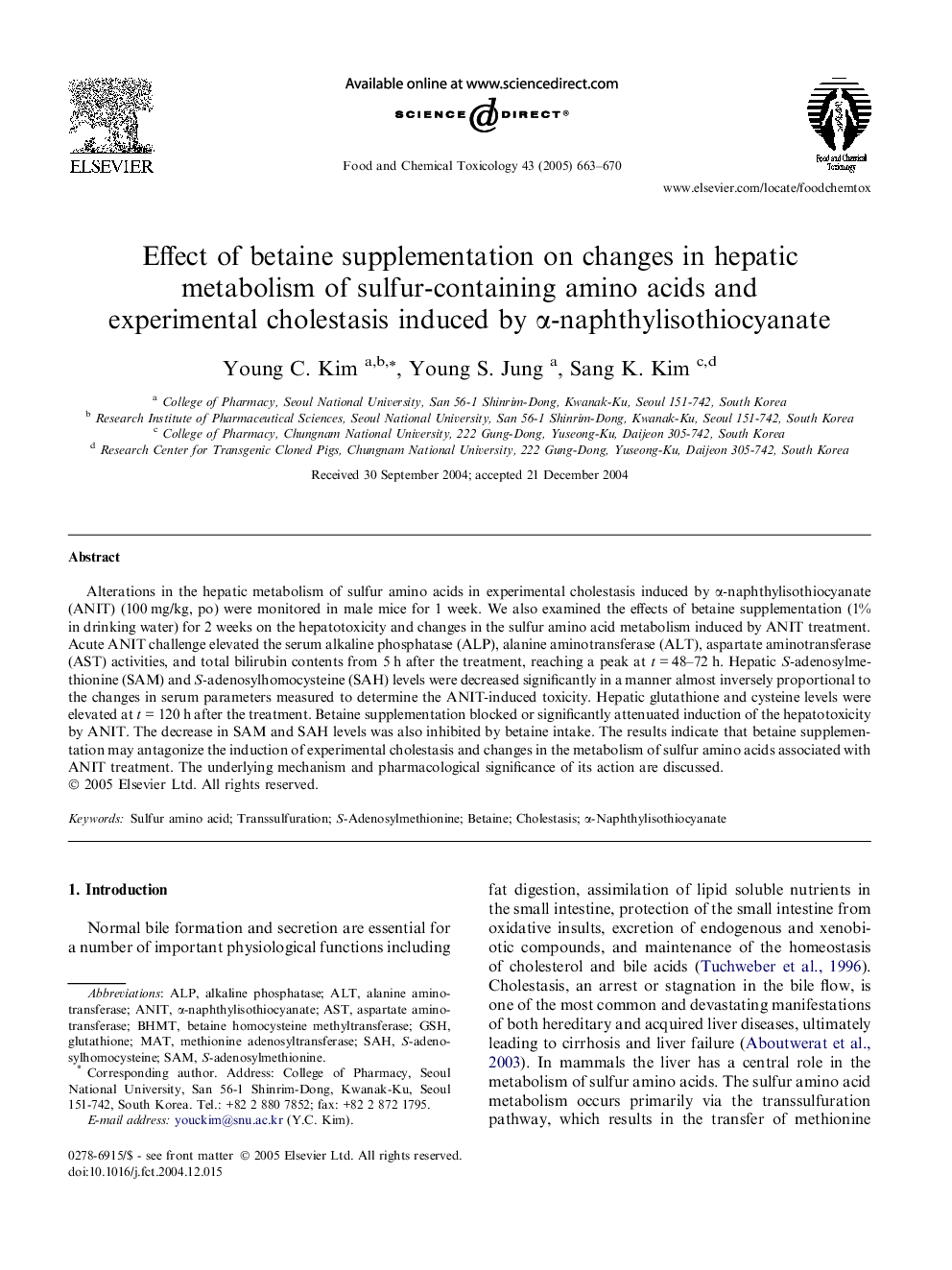| Article ID | Journal | Published Year | Pages | File Type |
|---|---|---|---|---|
| 9030641 | Food and Chemical Toxicology | 2005 | 8 Pages |
Abstract
Alterations in the hepatic metabolism of sulfur amino acids in experimental cholestasis induced by α-naphthylisothiocyanate (ANIT) (100 mg/kg, po) were monitored in male mice for 1 week. We also examined the effects of betaine supplementation (1% in drinking water) for 2 weeks on the hepatotoxicity and changes in the sulfur amino acid metabolism induced by ANIT treatment. Acute ANIT challenge elevated the serum alkaline phosphatase (ALP), alanine aminotransferase (ALT), aspartate aminotransferase (AST) activities, and total bilirubin contents from 5 h after the treatment, reaching a peak at t = 48-72 h. Hepatic S-adenosylmethionine (SAM) and S-adenosylhomocysteine (SAH) levels were decreased significantly in a manner almost inversely proportional to the changes in serum parameters measured to determine the ANIT-induced toxicity. Hepatic glutathione and cysteine levels were elevated at t = 120 h after the treatment. Betaine supplementation blocked or significantly attenuated induction of the hepatotoxicity by ANIT. The decrease in SAM and SAH levels was also inhibited by betaine intake. The results indicate that betaine supplementation may antagonize the induction of experimental cholestasis and changes in the metabolism of sulfur amino acids associated with ANIT treatment. The underlying mechanism and pharmacological significance of its action are discussed.
Keywords
α-naphthylisothiocyanateBHMT, betaine homocysteine methyltransferaseANIT, α-naphthylisothiocyanateALP, alkaline phosphataseMAT, methionine adenosyltransferaseSAH, S-adenosylhomocysteineSAM, S-adenosylmethionineAST, aspartate aminotransferaseALT, alanine aminotransferaseS-adenosylmethionineSulfur amino acidBetaineTranssulfurationcholestasisGSH, glutathione
Related Topics
Life Sciences
Agricultural and Biological Sciences
Food Science
Authors
Young C. Kim, Young S. Jung, Sang K. Kim,
